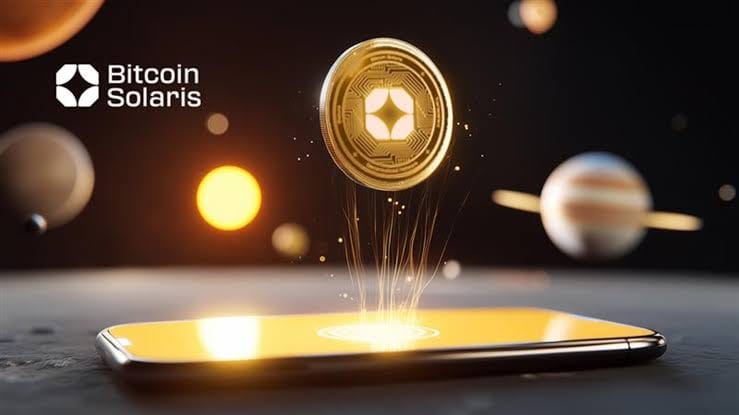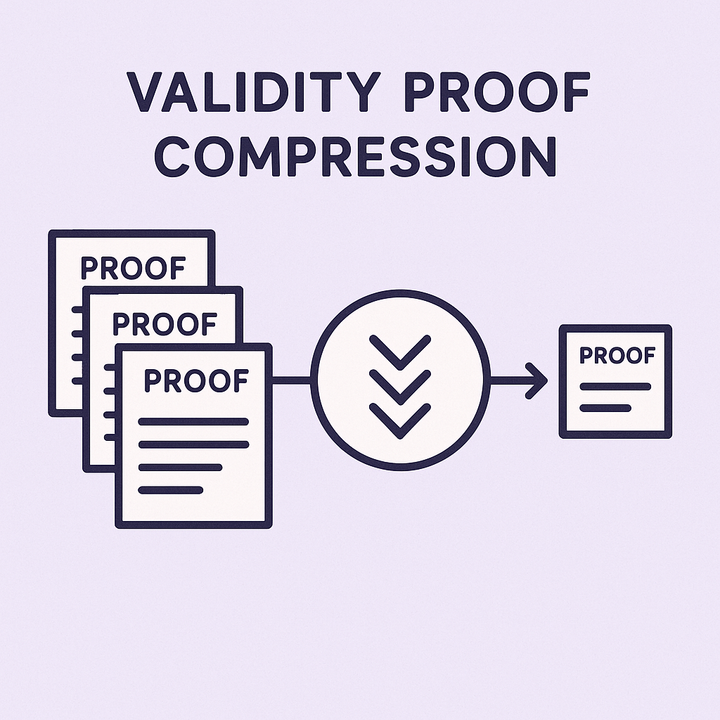Bitcoin Solaris’s Nova App Private Beta: Mine Bitcoin on Your Smartphone

Summary:
Bitcoin Solaris has rolled out an innovative hybrid consensus architecture and kicked off the private beta for the Nova App, allowing users to mine BTC‑S tokens right from their smartphones. By merging Proof‑of‑Stake (PoS) and Proof‑of‑Capacity (PoC) at the foundational level, along with a strong second layer for quick finality, Bitcoin Solaris can achieve confirmations in under 2 seconds while maintaining sustainable decentralization. The Nova App takes advantage of unused CPU and storage on mobile devices, using up to 99% less energy compared to traditional validators, making it easier for more people to get involved by reducing technical hurdles. This article dives into the technical details of the hybrid consensus, looks at the user-friendly design of the Nova App, and assesses its potential effects on decentralization, network security, and broader adoption.
Introduction
The blockchain world is really at a turning point right now. Networks need to be able to handle millions of users while still keeping security tight and being environmentally friendly. Bitcoin Solaris is stepping up to meet these challenges with its unique dual-layer hybrid consensus architecture, designed specifically for mobile-friendly mining and speedy, decentralized applications. The recent launch of the Nova App in private beta is a game changer, turning everyday smartphones into mining nodes that help secure the network and earn BTC-S tokens. GlobeNewswireGlobeNewswire.
This article will:
- Dive into the hybrid consensus design and how it breaks away from the traditional single-mechanism blockchains.
- Take a closer look at the Nova App’s mobile mining mechanism and its energy profile.
- Evaluate the implications for decentralization, user adoption, and the wider crypto ecosystem.
Throughout, we’ll link to relevant glossary terms to clarify technical concepts, and reference Mitosis University resources to deepen understanding of consensus mechanisms, DeFi fundamentals, and ecosystem strategies.
Hybrid Consensus Architecture
Dual‑Layer Design
Bitcoin Solaris uses a clever hybrid model that divides responsibilities into two layers, striking a balance between security and performance.
- Base Layer (PoS + PoC):
- Proof‑of‑Stake (PoS): Validators stake their BTC‑S tokens to take part in block selection, which helps maintain economic security and deters any malicious actions.
- Proof‑of‑Capacity (PoC): Validators set aside disk space to create verifiable randomness, which boosts cryptographic strength without requiring a lot of computational effort. Benzinga.
- Finality Layer:
- A second consensus layer collects votes from the validators on the base layer, ensuring that transactions are finalized in under two seconds. This setup allows for quick transaction confirmations while reducing the forks and delays that often plague single-layer chains. Benzinga.
This architecture overcomes scalability bottlenecks and aligns with Mitosis Core principles of scalable governance and liquidity strategies, enabling real‑world DeFi applications that require both speed and security.
Advantages Over Single‑Mechanism Chains
Traditional blockchains typically operate on either Proof of Work (like Bitcoin) or Proof of Stake (like Ethereum 2.0). Each of these single-mechanism methods comes with its own set of trade-offs: PoW provides strong security but at a significant energy expense, while PoS can lead to a concentration of power among larger validators. Enter Bitcoin Solaris’s hybrid model: a fresh approach that aims to balance these challenges.
- This method significantly cuts down on energy use compared to Proof of Work (PoW). According to Analytics Insight, it can use up to 99% less energy than Avalanche validators. Analytics Insight.
- This approach boosts decentralization by allowing participation based on disk space, in addition to the usual stake-based validation.
- It delivers impressive performance with a throughput of 10,000 transactions per second through parallel sharding, achieving finality in under two seconds—all while keeping security intact.Cryptopolitan.
These features position Bitcoin Solaris as a leader in blockchain foundations, offering a practical blueprint for sustainable, high‑performance networks.
Nova App: Mobile‑First Mining
Seamless User Experience
The Nova App's private beta is a game-changer, transforming smartphones into mining nodes with just a tap. Here are some standout features designed with users in mind:
- Cross‑Platform Support: Whether you're on iOS or Android, this app is accessible to everyone. Mitrade.
- Background Mining: It smartly uses 1–5 GB of storage and idle CPU cycles, mainly while your phone is charging, to validate transactions without slowing down your device or draining your battery. CoinTrust.
- Built‑In Wallet: Users can easily store and manage their BTC-S rewards right in the app, making the onboarding process a breeze.
- Adaptive Algorithm: The mining intensity adjusts according to your device's capabilities, ensuring a good balance between potential rewards and user comfort.Mitrade.
By removing the need for complicated command-line setups, extra hardware, and tricky staking requirements, the Nova App makes it easier for anyone to connect to the ecosystem and encourages wider adoption.
Energy Efficiency and Sustainability
Environmental issues are a big concern for many Proof of Work (PoW) networks. However, Nova App takes a different approach with its low-impact mining.
- It operates quietly in the background, using very little power by taking advantage of the efficient chipsets found in modern smartphones.
- In fact, it uses 99% less energy compared to similar Avalanche validation processes, according to Analytics Insight.
- Plus, it sidesteps the e-waste and infrastructure challenges that come with ASIC rigs, which aligns perfectly with green computing principles.
This eco-friendly strategy not only appeals to users but also catches the attention of regulators, reinforcing Bitcoin Solaris’s dedication to environmental responsibility within the blockchain community.
Impact on Decentralization and Security
Broader Node Distribution
Mobile mining is a game changer, allowing millions of smartphone users to join in on node participation and making network security more accessible to everyone.
- Instead of relying on just a handful of big validators, the network thrives on a rich mix of lightweight nodes from all around the globe.
- This spread of participation helps to reduce centralization, boosting both censorship resistance and fairness in governance.
The shift mirrors lessons from Ethereum’s staking dynamics and Mitosis University’s analyses of governance proposalsin decentralized ecosystems.
Economic Incentives and Tokenomics
Bitcoin Solaris follows a halving-based emission schedule similar to Bitcoin, featuring a cap of 21 million BTC-S and no inflation from staking. Tokens are distributed through:
- Private and Public Presales (Phase 3 is currently open).
- Mobile Mining Rewards via the Nova App.
This approach allows both early participants and everyday users to acquire and stake tokens, creating a shared incentive for all stakeholders. Benzinga.
Potential Challenges and Considerations
While mobile mining holds a lot of promise, it also brings some unique challenges to the table:
- Device Fragmentation: To ensure smooth performance across a variety of smartphone models and operating system versions, we need thorough testing and adaptable algorithms.
- Network Congestion: An influx of new mobile nodes could lead to increased gossip traffic, so Bitcoin Solaris will need to fine-tune how it discovers peers and spreads messages.
- Regulatory Landscape: Financial incentives tied to mobile platforms might trigger regulations around securities or payments in certain areas, which means we’ll need clear compliance frameworks in place.
Tackling these challenges will require ongoing community governance, regular protocol updates, and partnerships with regulatory bodies—this is where Mitosis University’s community initiatives and roadmap development analysis can really shine and provide valuable insights.
Conclusion
The private beta of the Nova App marks a significant step forward in making blockchain more accessible and sustainable. By integrating a hybrid PoS/PoC consensus with a mobile-first mining interface, Bitcoin Solaris allows everyday users to get involved in network security, earn crypto rewards, and promote true decentralization—all while keeping environmental impact to a minimum.
As the Nova App gears up for its public launch, its success will depend on strong governance, technical reliability, and clear regulations. For contributors and enthusiasts seeking deeper technical understanding, explore our articles on consensus mechanisms, decentralized governance, and parallel sharding.
Internal Links:
- Learn more about hybrid consensus in our Mitosis Core guide on scalable governance.
- Dive into energy‑efficient blockchain design in our Ecosystem Connections article on green computing.
- Explore DeFi integration with mobile mining in our Market Insights post on mobile DeFi trends.
- Liquidity TVL Glossary
- Expedition Boosts
- Straddle Vault
- Mitosis University
- Mitosis Blog.
- Mitosis Core: Liquidity Strategies.
By making mining accessible to everyone and changing the way we reach consensus, Bitcoin Solaris’s Nova App is set to revolutionize the blockchain world—turning every smartphone into a node and every user into a vital part of the future of decentralized finance.

Comments ()